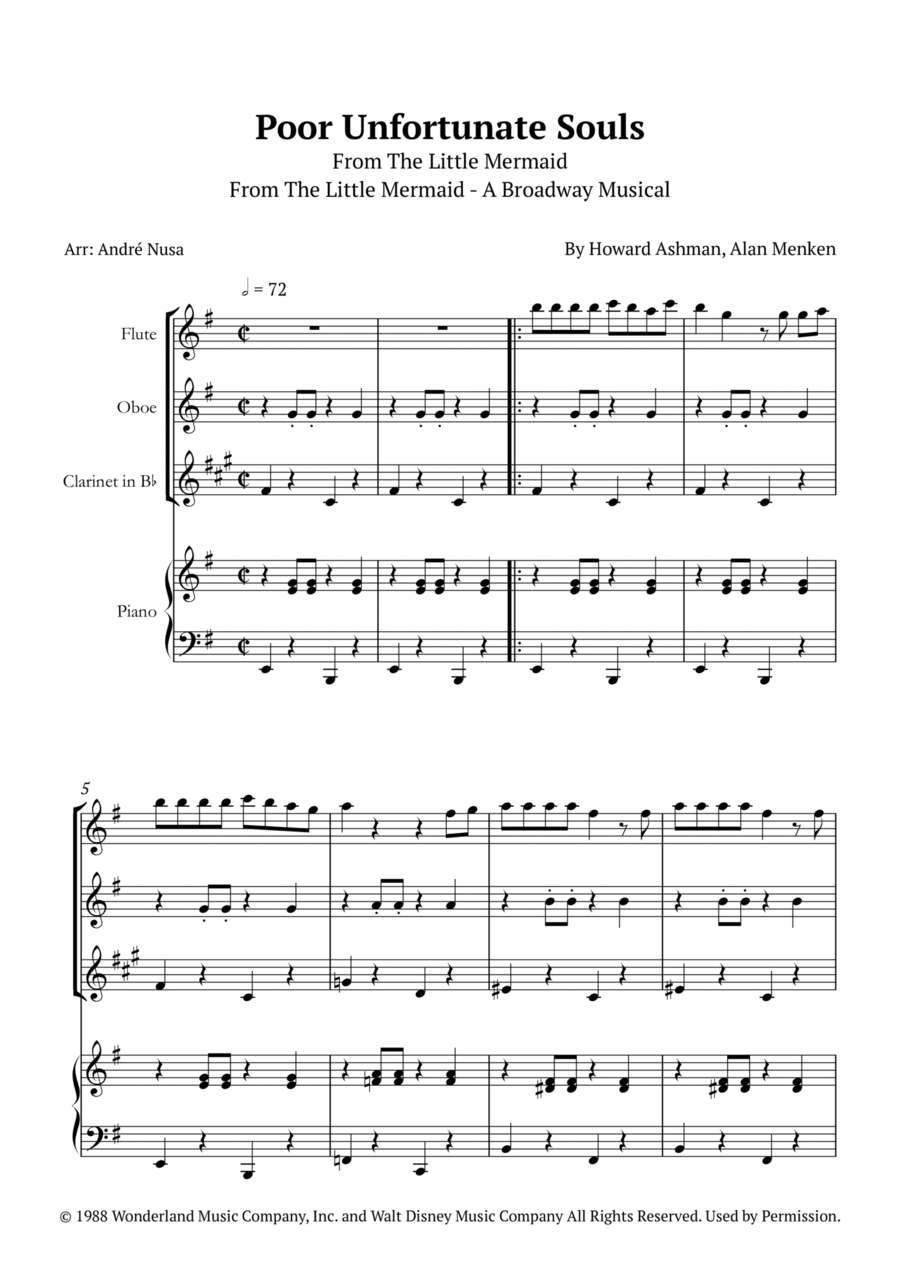B-Flat Clarinet,Flute,Oboe,Piano - Level 2 - Digital Download SKU: A0.1231450 Composed by Alan Menken and Howard Ashman. Arranged by André Nusa. Broadway,Film/TV,Musical/Show,Singer/Songwriter. 10 pages. Andre_Nusa #827128. Published by Andre_Nusa (A0.1231450). Experience the mesmerizing melodies of Poor Unfortunate Souls from Disney's The Little Mermaid in a captivating arrangement for piano, flute, oboe, and clarinet. This enchanting sheet music brings the iconic song to life, immersing you in the magic and malevolence of Ursula the Sea Witch. Meticulously transcribed for this piano quartet, this arrangement faithfully captures the haunting and theatrical essence of Poor Unfortunate Souls. The piano sets a rich and dynamic foundation, while the flute, oboe, and clarinet intertwine in a tapestry of expressive and melodic voices. From the very first note, you'll be transported to Ursula's lair as the dark and alluring melodies unfold before you. The intricate harmonies and evocative phrasing delve deep into the heart of the song, allowing you to explore the depths of Ursula's villainous character through the power of music. Perfect for performances, recitals, or casual play, this arrangement offers a platform to showcase your musical prowess and share the enchantment of The Little Mermaid with your audience. Each instrument adds its unique color and character, culminating in a truly memorable and immersive musical experience.
